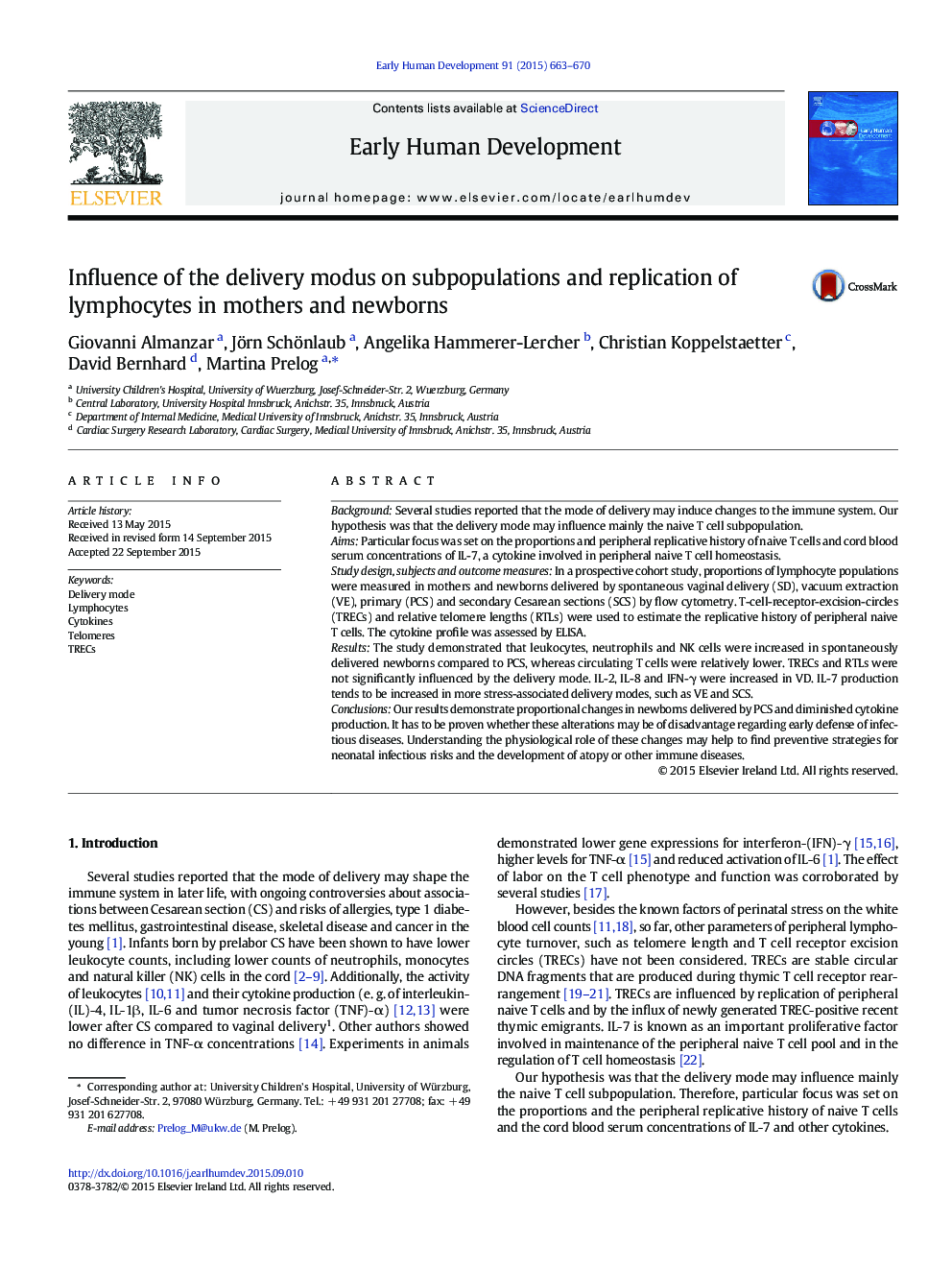| Article ID | Journal | Published Year | Pages | File Type |
|---|---|---|---|---|
| 3916697 | Early Human Development | 2015 | 8 Pages |
•Leukocytes, neutrophils and NK cells increased in vaginal delivery•Circulating T cells relatively lower in vaginal delivery•TRECs and RTLs not significantly influenced by the delivery mode•IL-2, IL-8 and IFN-γ increased in vaginal delivery•IL-7 production increased in more stress-associated delivery modes
BackgroundSeveral studies reported that the mode of delivery may induce changes to the immune system. Our hypothesis was that the delivery mode may influence mainly the naive T cell subpopulation.AimsParticular focus was set on the proportions and peripheral replicative history of naive T cells and cord blood serum concentrations of IL-7, a cytokine involved in peripheral naive T cell homeostasis.Study design, subjects and outcome measuresIn a prospective cohort study, proportions of lymphocyte populations were measured in mothers and newborns delivered by spontaneous vaginal delivery (SD), vacuum extraction (VE), primary (PCS) and secondary Cesarean sections (SCS) by flow cytometry. T-cell-receptor-excision-circles (TRECs) and relative telomere lengths (RTLs) were used to estimate the replicative history of peripheral naive T cells. The cytokine profile was assessed by ELISA.ResultsThe study demonstrated that leukocytes, neutrophils and NK cells were increased in spontaneously delivered newborns compared to PCS, whereas circulating T cells were relatively lower. TRECs and RTLs were not significantly influenced by the delivery mode. IL-2, IL-8 and IFN-γ were increased in VD. IL-7 production tends to be increased in more stress-associated delivery modes, such as VE and SCS.ConclusionsOur results demonstrate proportional changes in newborns delivered by PCS and diminished cytokine production. It has to be proven whether these alterations may be of disadvantage regarding early defense of infectious diseases. Understanding the physiological role of these changes may help to find preventive strategies for neonatal infectious risks and the development of atopy or other immune diseases.
